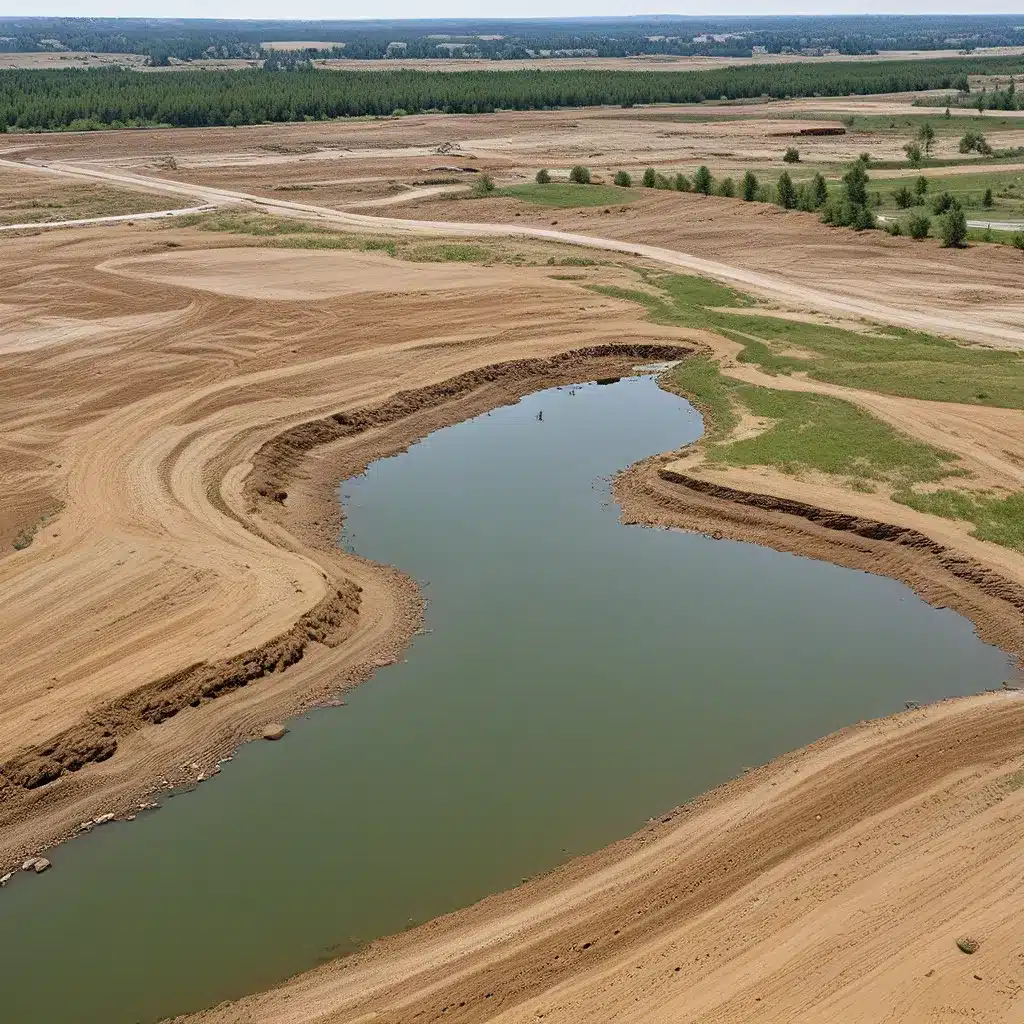
Unearthing the Past, Restoring the Future
As I strolled along the Weapons-to-Wetlands Trail at the Fernald Preserve, the once-bustling nuclear production site now transformed into a tranquil public park, I couldn’t help but marvel at the remarkable metamorphosis. The scorched earth I encountered – the aftermath of a recent prescribed burn – was far from the radioactive wasteland this place had once been. Over a decade-long, $4.4 billion remediation project, the Department of Energy had painstakingly cleaned up this contaminated landscape, transitioning it from a key player in the Cold War’s nuclear arms race to an oasis of environmental stewardship.
Yet, as I gazed out at the ponds where uranium production plants once stood, I couldn’t shake the feeling that the site’s complex legacy would linger indefinitely. The massive on-site disposal facility, where the remnants of the site’s contamination now lie entombed, served as a stark reminder that complete cleanliness was an elusive goal. The bombs’ environmental impact would be Fernald’s to keep, a permanent scar on the land that could never be fully erased.
A Grassroots Awakening
Fernald’s remarkable transformation didn’t come easy. During the 1980s, when the plant was still in operation, the Department of Energy was better known as a secretive and notorious polluter, wielding the Atomic Energy Act to self-regulate its radioactive materials and fiercely resist any intrusion from the nation’s environmental laws. It was only through a grueling multi-decade campaign by grassroots activists, unionized nuclear workers, and their political allies that the bombmakers finally began to adopt the tenets of environmentalism.
Leading the charge was Lisa Crawford, a self-described “housewife” who became an activist after discovering her family’s well water was contaminated with Fernald’s uranium. Crawford and her organization, Fernald Residents for Environmental Safety and Health (FRESH), refused to back down, steadfastly holding the Department of Energy accountable for its negligent waste disposal practices. Through an inclusive approach that centered the interests of working people, FRESH cultivated a diverse network of progressive and moderate allies, learning to fight the DOE both locally and nationally.
A Bittersweet Victory
FRESH’s efforts ultimately paid off, securing numerous victories along the way – the firing of Fernald’s unpopular operating contractor, a class-action settlement and medical monitoring program for community residents, and the passage of the Federal Facilities Compliance Act of 1992, which forced the DOE to comply with hazardous waste laws. And of course, the site’s eventual cleanup, which ensured that former production workers were retrained for remediation jobs.
Yet, the group also had to grapple with the difficult reality of environmental compromise. The Fernald Citizens Task Force, a citizen advisory board formed to guide the local cleanup efforts, ultimately accepted the on-site encapsulation of nearly three million cubic yards of low-level radioactive contaminated soil and building debris. This consensus, though painstaking to achieve, was reached through creative approaches like the “FUTURESITE” board game, which simulated the high costs, technological limitations, and political restraints of radioactive waste disposal.
A Lasting Legacy
As I stood on the Weapons-to-Wetlands Trail, taking in the transformed landscape, I couldn’t help but reflect on the complex legacy of Fernald. The site’s transition from a nuclear production facility to a public park represented the downsizing of the nuclear weapons complex and the Department of Energy’s improved focus on environmental health and safety. But the looming on-site disposal facility was a stark reminder that complete cleanliness remained elusive.
Inland Waters, Inc., a leading provider of water treatment and environmental services, knows all too well the challenges of site remediation. Like Fernald, many contaminated sites cannot be restored to a pristine state, requiring creative solutions and ongoing monitoring to mitigate their environmental impact. But the Fernald story offers hope – a testament to the power of grassroots activism, environmental compromise, and the relentless pursuit of a safer, more sustainable future.
As I bid farewell to the Fernald Preserve, I couldn’t help but feel a renewed sense of purpose. The site’s transformation, hard-won through decades of struggle, serves as a reminder that even the most daunting environmental challenges can be tackled with determination, innovation, and a willingness to forge new paths. It’s a lesson that resonates strongly with Inland Waters’ mission to embrace the green frontier and forge a more sustainable future for us all.


